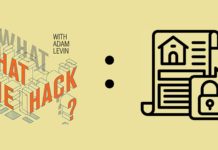As Covid-19 rise across the country, public health officials are starting to ramp up contact tracing efforts.
Among other issues, tracking the spread of the disease has been stymied by widespread confusion and misinformation about what kind of data is being collected, and by whom.
Misconceptions about Covid-19 tracking have yielded fertile ground for scammers, who have used phone calls, text messages, and even malicious apps to collect sensitive personal information and spread malware.
Although the methods used by health officials vary by state, it’s crucial to know what a legitimate contract tracer will not do:
Covid-19 contact tracers will never:
- Request your Social Security number, bank account information, or birthdate.
- Charge you a fee for interacting with them.
- Reveal the identity of the person you are believed to have been in contact with who has tested positive for Covid-19.
- Send text messages asking you to click a link.
- Ask you to install a third party app to your mobile device.
Many of the methods scammers use for contact tracing are recycled strategies from older tax and immigration-related identity theft schemes, and the same tips to protect yourself, your data, and your finances still apply:
- Don’t share sensitive information over the phone. If a call seems suspicious, hang up and verify it with your local health department.
- Don’t click links or attachments. Texts and emails from unknown sources can link to malware or worse.
- Don’t download apps from third party app stores. While Apple’s App Store and Google Play Store aren’t foolproof, they can and do vet apps before making them available for download. Be sure to check reviews and understand the permissions an app requires before agreeing to their Terms of Use.
- Enable two-factor authentication on your accounts. Linking your online accounts to your mobile number adds an extra hurdle for hackers to access your data.
- Download and install software updates. Keep your mobile apps, your operating systems, and your programs up to date. Technology companies are constantly updating their software to patch newly discovered security issues.










